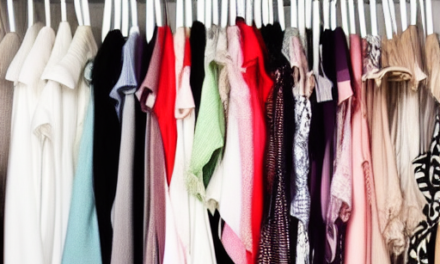When it comes to tackling a paper pile, the best way to organize papers at home is to start by gathering all of your papers in one place and checking each page carefully. Next, sort them into categories, which will make filing them easier. Ideally, you should separate your papers into three categories: personal, professional, and legal.
Binders
A binder is a great way to keep all your papers organized. You can use dividers to organize your papers by category, month, and year. Label each section with the year, such as “December 2018” or “January 2019”. You can also add dividers to keep different types of paper separate from one another.
You can label each section of your binder with a permanent marker or with printed labels. Then, file the papers that you need to organize behind the dividers. Be sure to make adjustments before closing the binder to keep everything in place. This will prevent any papers from getting pinched or torn.
Another great use for a binder is as a craft pattern book. You can use clear sleeved binder dividers to store extra copies of patterns or pieces of projects. You can even use a quick book for your craft projects and magazine clippings. You can also use tabbed dividers to set up different categories for different interests, such as cooking, sewing, gardening, or crafts.
Another way to use a binder at home is to keep important school paperwork organized. Your child will get tons of paper in school, so using a binder is a great way to keep everything organized and accessible. You can even use it the following year. A binder is a great way to organize papers at home, and the best part is that it will continue to serve as a tool for years to come.
Paper clutter is often the result of improper organizing. For example, coupon clipping is a major contributor to paper clutter. Often, coupons are stored in the junk drawer, but you can save them by organizing them in a binder. You can also use a binder to keep all of your receipts organized.
Vertical space
One of the best ways to organize papers at home is by using vertical space. It helps improve findability and visibility. You can even use this space for other items. The trick is finding the right balance. Avoid stacking up too many items or using too many storage containers. You can also create designated family areas for different types of papers and organize them by activity.
You can use a letter tray or desktop file organizer for active paperwork. Labeling your workspace helps you find items quickly and makes the transition from working files to archived storage easier. Creating a limit for your workspace will also force you to streamline paperwork. If you have too many piles or files, consider using a magnetic board.
Color-coding
Color-coding is a very useful method for organising your home office. The process can save you a great deal of time by making it easier to find the supplies you need. The concept of color-coding is not only useful for organizing your home office but can also be applied in the workplace. For example, you can use different colors to denote different folders or different subjects.
Color-coding is a tried and true method for organizing your office. It’s quick and easy to use and will encourage you to sort your files into categories. It also adds a little fun to the process of organizing. You can even make your own color-coded labels.
It can also help you boost your productivity. Research has shown that people are more productive when they have an organized environment. Clutter makes people procrastinate. And a messy home office is not a pleasant place to work. With color-coded papers, you’ll be more likely to get things done.
You can also use color-coded filing folders. This will help you identify which folders contain important documents. Color-coding will help you find important papers faster, and it will also make paper filing more fun! Once you’ve sorted your papers into different categories, you can easily access them later.
If you can’t afford to spend money on a filing cabinet, you can still get cute hanging file folders. You can find them online. There are many places selling them. These colorful hanging file folders are a great way to organize your paperwork. If you’d prefer a more affordable alternative, you can even create a sewing cloth mail sorter with free printables from online resources.
Shredding
One of the most effective ways to organize papers at home is shredding personal documents. This is particularly important for items with sensitive information, such as credit card offers and home insurance policies. Shredding will also help to prevent identity theft by protecting confidential information. To be on the safe side, make sure to mark the paper with an IDENTITY THEFT ROLLER before shredding it. Keep in mind that your shredding is not recyclable, so you will need to dispose of it properly. Also, do not shred old letters or cards, unless you are sure they have no sentimental value.
It is also important to regularly sort through papers so you don’t build up piles. Sorting through the papers on a daily or weekly basis is a good habit to make. This will prevent piles from growing around your home and make it easier to find things you need.
You can also take the paper to a shredding company. Shredding is an easy way to organize papers at home and it protects your privacy. You can also recycle the scraps and put them into separate bags. Remember, some towns require shredding paper to be in a separate bag and stapled shut. Shredders are available in many sizes and can be used at home or in a local shredding service.
It is important to keep in mind that any excess paper in your home can contain confidential information. If you choose to shred the paper yourself, make sure to use a cross-cut shredder for added security. If you choose to keep the paper, you can use filing cabinets to organize it.
After sorting the papers, put them in piles. The first pile should have important papers. The second pile should contain papers that you need. If you can’t find an important document, you can keep it somewhere else in the house. If you can’t find it, you can easily access it by hanging it on the kitchen message board. Another option is placing it in a shallow tray on your desk.













